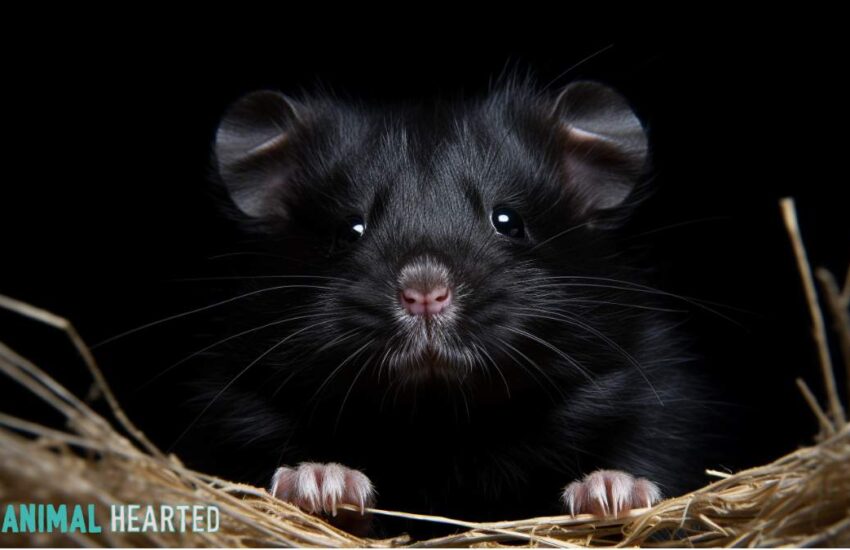Distinct Features of Hamster Breeds
Hamsters are charming, small pets that come in various breeds, each with unique characteristics and traits. Whether you are a potential hamster owner or just a fan, understanding the distinct features of different hamster breeds can deepen your appreciation for these delightful creatures. In this article, we will explore some popular hamster breeds, their distinct features, and provide helpful care tips.
Popular Hamster Breeds
There are several types of hamsters commonly kept as pets, and each breed has its own personality, size, and physical characteristics.

**Syrian Hamsters** are the largest and often considered the most personable of all breeds. Also known as golden hamsters, they typically grow to about 6-7 inches long. They can be a variety of colors including golden, black, and white. Syrian hamsters are known for their friendly nature; they tend to be more social with humans compared to other breeds. However, they are solitary creatures and should be housed alone to prevent fighting, especially as they mature.
Roborovski Hamsters: The Smallest of the Pack
Roborovski hamsters, often referred to simply as “Robo hamsters,” are among the smallest breeds, typically measuring about 4 inches in length. They have a golden-brown and white fur coat, along with a playful demeanor that makes them a joy to watch. Despite their small size, Roborovskis are vibrant and energetic, requiring plenty of space to run and explore. They’re faster than other types, making them slightly more challenging to handle, particularly for young owners.
Dwarf Hamsters: Varieties and Traits
Dwarf hamsters come in several species including Campbell’s Dwarf and Winter White Dwarf. They are generally 2-4 inches in length and can be identified by their smaller size and round, stout body. Campbell’s Dwarf are known for their diverse color patterns, whereas Winter Whites turn white during winter months as a form of camouflage. These little guys are social animals, often living in pairs or small groups, which makes them an excellent choice for owners looking to have more than one pet.
Caring for Hamsters
Understanding the distinct features of hamster breeds is essential, but proper care is equally important to ensure a healthy and happy pet.
Habitat Requirements
Creating a suitable habitat is vital for hamsters, regardless of their breed. Syrian hamsters require cages with a minimum of 24 inches long interior space and multiple accessories for entertainment. Dwarf hamsters can thrive in smaller sets, but they also require sufficient space to burrow and play. Ensure the cage has proper ventilation and substrate for digging, alongside appropriate bedding material to keep them cozy. Consider adding tunnels, wheels, and toys to promote physical activity.

Diet and Nutrition
Feeding your hamsters a well-balanced diet is crucial. Hamsters mainly consume commercial pellets designed specifically for their digestive needs, along with fresh fruits and vegetables as occasional treats. Avoid citrus fruits as they can upset their stomachs. It’s important to provide clean drinking water daily; a water bottle is often preferable to a bowl, as it keeps the bedding dry. Always monitor their weight to prevent obesity, especially in breeds such as Syrian hamsters that might be more prone to it.
Behavioral Characteristics of Hamsters
The behavior of your specific hamster breed will influence how you interact and care for them.
Social Interaction
Understanding hamster behavior is key to fostering a strong bond with your pet. Syrian hamsters are often less inclined to socialize with other hamsters but love to interact with their human companions. On the other hand, Dwarf hamsters usually enjoy the company of their own kind, but non-aggressive handling is vital in establishing trust. Allowing time outside the cage in a safe, enclosed area can provide enriched interaction, promoting exercise and understanding of their personalities.
Nurturing Your Hamster’s Happiness
Active toys can have a positive impact on hamster’s emotional well-being. Creating an environment filled with climbing structures, chews, and things to explore can prevent boredom and destructive behaviors. Regular handling, socialization, and interaction will unravel their unique characteristics while promoting a longer, healthy life. Remember to provide plenty of hiding spaces, as hamsters can be shy and may require time to adjust to new environments.
Conclusion
In summary, understanding the distinct features of various hamster breeds helps in providing appropriate care tailored to their needs. From the solitary nature of the Syrian hamster to the sociability of Dwarf hamsters, each breed has unique requirements and behaviors. By ensuring their habitats, diets, and interactions meet those needs, pet owners can enjoy a rich and fulfilling experience with their small fuzzy companions.
FAQ
1. What is the most affectionate hamster breed?
The Syrian hamster is known for being the most affectionate among the breeds. Their friendly nature makes them easier to handle, and they often enjoy human interaction. Proper socialization helps in building a bond with them, allowing for closer relationships.
2. Can dwarf hamsters live together?
Yes, dwarf hamsters can live together as they are social animals. However, it’s essential to introduce them carefully and ensure they have enough space to minimize territorial disputes. It is usually safer to house same-sex pairs or groups from a young age.
3. How often should I clean my hamster’s cage?
It is essential to clean your hamster’s cage at least once a week to maintain hygiene. However, spot cleaning daily will help keep the waste and odors at bay, contributing to a healthy environment for your pet.
4. Do hamsters require an elaborate setup?
While hamsters don’t need an excessively elaborate setup, they do require adequate bedding, hiding spaces, and enriching toys. A simple cage with enough exercise space and stimulating elements will suffice. Always prioritize your hamster’s safety and well-being over aesthetic appeal.
5. Can hamsters eat fruits and vegetables?
Yes, Hamsters can enjoy fruits and vegetables, but in moderation. Fresh foods can provide nutritional benefits, but avoid high-sugar fruits like bananas and citrus fruits, as they may upset their digestive systems.
